BULGOGI BRITHERS Jamsil Lotte World(불고기브라더스 잠실롯데월드)
6.9Km 2020-12-21
240 Olympic-ro Songpa-gu Seoul
+82-2-2143-1266
This is a shop specializing in handmade lunch boxes made on the same day. This Korean dishes restaurant is located in Songpa-gu, Seoul. The most famous menu is box lunch.
Museo de la Medicina Tradicional Yangnyeongsi de Seúl (서울약령시 한의약박물관)
6.9Km 2023-04-06
Yangnyeongjungang-ro 26, Dongdaemun-gu, Seúl.
Situado en el mayor centro de distribución de hierbas medicinales de Corea y Bojewon (especie de clínica gratuita de la dinastía Joseon), el Museo de la Medicina Tradicional Yangnyeongsi es un espacio cultural establecido para promocionar, conservar y promover la cultura médica tradicional coreana ante el mundo a través de la exhibición de artículos médicos y hierbas medicinales.
Abierto el 13 de de septiembre de 2006, el museo tiene un área de 2.335 ㎡ y expone 420 artículos médicos y 350 tipos de hierbas medicinales. También cuenta con miles de libros y documentos que ayudan a entender fácilmente la información de cada una de las hierbas.
Parque Songpa Naru (Lago Seokchon) (송파나루공원(석촌호수))
6.9Km 2024-07-29
Samhaksa-ro 136, Songpa-gu, Seúl.
El Parque Songpa Naru es un parque urbano de Seúl. Cuenta con dos lagos separados por la avenida Songpa-daero, así como una pista de ejercicios y senderos alrededor de los lagos. Originalmente, una parte del río Hangang atravesaba este lugar, pero en 1971 se rellenó de tierra creando los lagos. El tamaño total de ambos lagos es de 217.850 ㎡, y albergan unas 737 toneladas de agua. La profundidad de los lagos es de 4-5 metros. Ahora el parque es un buen lugar de esparcimiento y relajación para los ciudadanos de Seúl.
Nori Madang de Seúl (서울놀이마당)
6.9Km 2021-02-02
Samhaksa-ro 136, Songpa-gu, Seúl
+82-2-2147-2800
Establecido en diciembre de 1984, el Nori Madang de Seúl ofrece diferentes espectáculos tradicionales en un escenario exterior para promocionar la cultura coreana y sus obras folclóricas coreanas entre el público. Las actuaciones tienen lugar cada fin de semana, realizando más de 120 actuaciones cada año, y en cada una atraen a más de 1.300 visitantes.
Dentro del Nori Madang de Seúl se encuentra la Asociación Songpa por la Preservación del Folclore, que ofrece seminarios sobre obras tradicionales —Songpa Sandae Nori (obra con máscaras) y Songpa Baekjung Nori (obra que se representa el decimoquinto día del séptimo mes lunar)— para estudiantes de forma gratuita.
Festival de las Flores de Cerezo del Lago (호수벚꽃축제)
6.9Km 2024-08-05
Samhaksa-ro 136, Songpa-gu, Seúl
02-2147-2800
El Festival de las Flores de Cerezo del Lago ofrece un paseo bajo los árboles de cerezo en plena floración en el lago Seokchon de Seúl. Además, también hay preparadas una variedad de actuaciones, exhibiciones y actividades durante los días del festival.
Nwijo (뉘조)
6.9Km 2021-03-19
27, Insadong 14-gil, Jongno-gu, Seoul
+82-2-730-9311
Nwijo (뉘조) is a Korean restaurant specializing in wild vegetable cuisine. The name ‘Nwijo’ means ‘the god of the silkworm,’ and likens wild vegetables to silkworms in that both can be eaten in their entirety. The restaurant serves original full-course Korean meals that are prepared using hundreds of kinds of wild vegetables, including special seasonal vegetables.
A typical full-course meal starts with delicious pumpkin porridge, followed by seasoned wild vegetables, root vegetable ssam (condiments wrapped in vegetable leaves), slices of boiled meat, and steamed lotus leaf-wrapped rice served with jjigae (Korean stew) and various side dishes. This kind of traditional feast is pleasing to both the eye and the palate and is topped off with sikhye (traditional sweet rice drink). Lunch specials are also available.
Seolleneun Majung (설레는마중)
6.9Km 2021-03-30
49, Insadong-gil, Jongno-gu, Seoul
+82-2-6954-2915
It is a store that sells both traditional Korean desserts and coffee. This cafe is located in Jongno-gu, Seoul. The most famous menu is rice cake.
Daehangno (대학로)
6.9Km 2021-04-09
Daehak-ro 104, Jongno-gu, Seúl.
+82-2-2148-1114
La zona de Daehangno, también escrita como Daehak-ro y Daehakro, es conocida como la calle de la juventud universitaria, ya que allí se ubicaba originalmente la Universidad Nacional de Seúl. Desde los años 80, muchos teatros comenzaron a trasladarse a Daehangno, y este lugar comenzó a desarrollarse como un centro cultural. Pronto se abrieron también cafés con música en vivo, salas de cine, cafés comunes y pubs, y la zona creció para convertirse en todo un distrito de entretenimiento. Su popularidad se mantiene aún por los famosos teatros pequeños tales como el Teatro Parangsae (Pájaro Azul) y Teatro Hakjeong, y unos 30 teatros adicionales, que contribuyen a que Daehangno continúe siendo un espacio neurálgico del arte en Corea.
En el centro de Daehangno está el Parque Marronnier, donde se realizan conciertos musicales en vivo o funciones de danza, interpretados por gente joven. Otra razón por la que se ha vuelto tan popular entre los jóvenes es la variedad de sitios interesantes y restaurantes que se pueden hallar aquí, facilitando lugares para reunirse antes o después de las obras teatrales o conciertos.
Sajo Tuna (사조참치)
6.9Km 2020-04-16
107-39, Tongil-ro, Seodaemun-gu, Seoul
+82-2-364-9838
Sajo Tuna is the perfect restaurant for tuna lovers. It serves fresh tuna served in varied styles to visitors. Chamdarangeo (bluefin tuna) Special Menu consists of the highest-grade tuna cuts along with unique decorations. Also, the standard menu includes gamasal gui (grilled tuna kama), braised tuna head, grilled tuna, and pan-fried tuna. In-house alcoholic drinks such as baengnyeoncho ju (perilla seed and prickly pear liquor) and insam sansuyu ju (ginseng and cornelian cherry liquor) are offered, making this restaurant more outstanding.
Jirisan Restaurant (지리산)
7.0Km 2019-08-01
30, Insadong 14-gil, Jongno-gu, Seoul
+82-2-723-4696
Jirisan is one of the representative Korean restaurants in Insa-dong, an area known for its traditional culture. One of the trademarks of this restaurant, besides its amazingly delectable bean and tofu dishes, is a wooden sign that welcome guests into a neat and cozy interior.
Each day, fresh beans are ground at the restaurant to prepare dishes such as soybean paste, soft tofu, and bean-curd tofu stew. Bean-curds are prepared by using seawater, which gives the tofu a unique flavor. The fresh and clean taste of the tofu is one of the many reasons that choosey tofu aficionados flock to the restaurant.
Not just limited to tofu, Jirisan presents customers with a full-range of side dishes such as kimchi, japchae (glass noodles with sautéed vegetables), cucumber kimchi, seasoned seaweed, braised lotus roots, roasted yellow corbinas (a type of fish), leafy greens, bean-curd stew, and more. The restaurant gives visitors a chance to experience a hearty traditional Korean-style meal, but has thoughtfully toned down its seasonings to appeal to a wider audience (particularly those not used to spicy foods).
One of the recommended menu items is the Jirisan set meal, which offers diners the chance to sample foods that are popular in the Jirisan region. Adventurous diners may want to try the sea urchin soup or dried Pollack soup.
The restaurant, originally a traditional Korean house, has been modified over the years to better suit the needs of its customers. The walls surrounding the structure were removed and a glass ceiling was installed to allow guests to enjoy the natural light of the sun as they sample some of the area’s best traditional Korean cuisine.
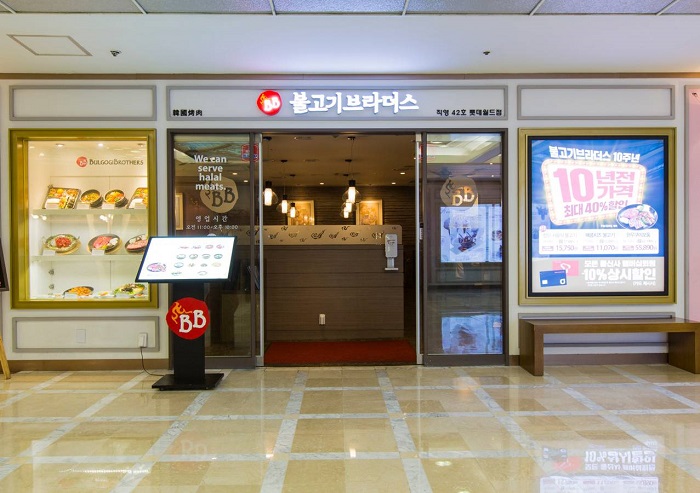
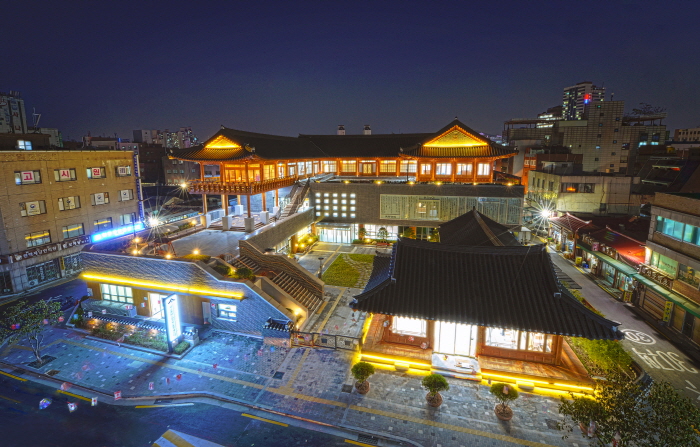

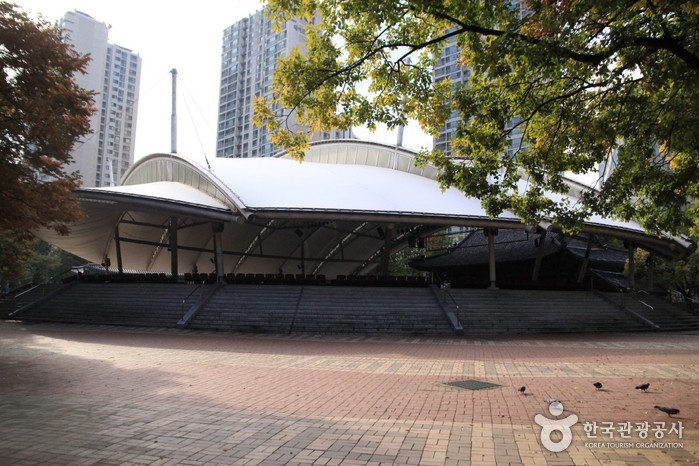
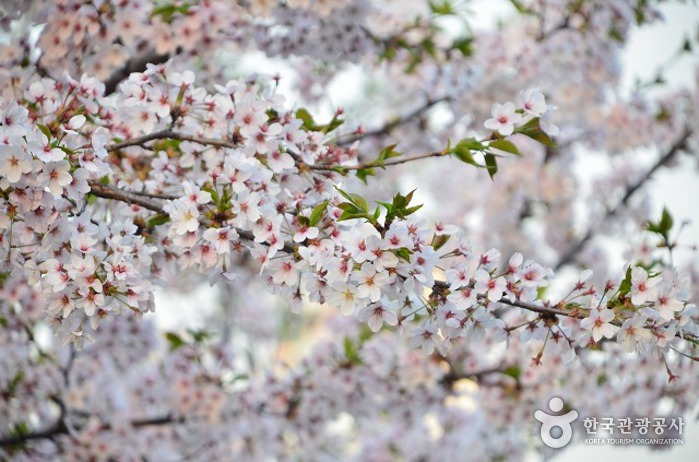
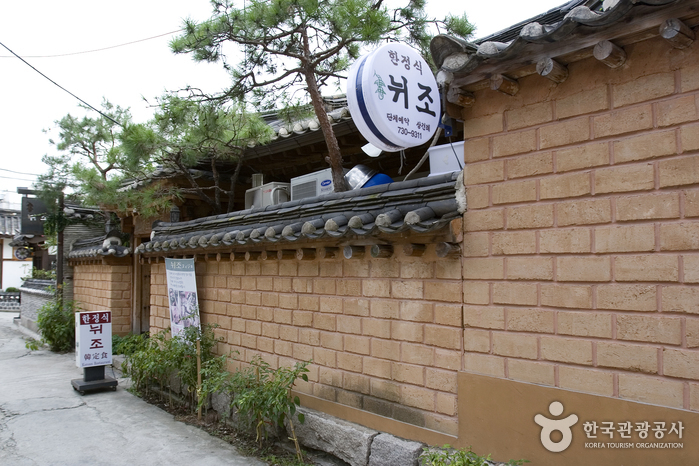
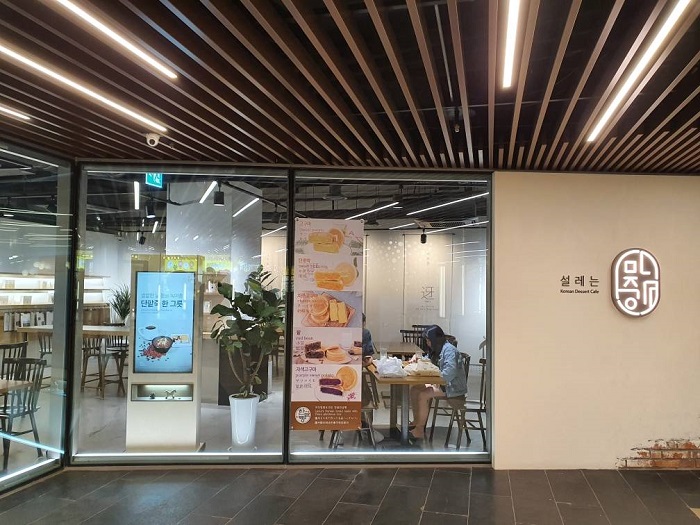
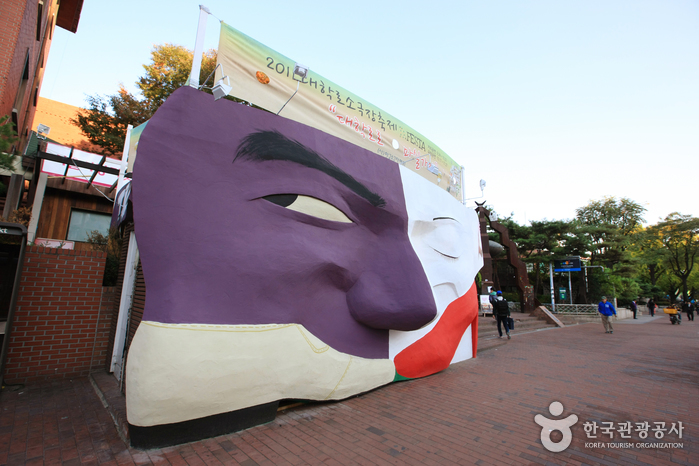
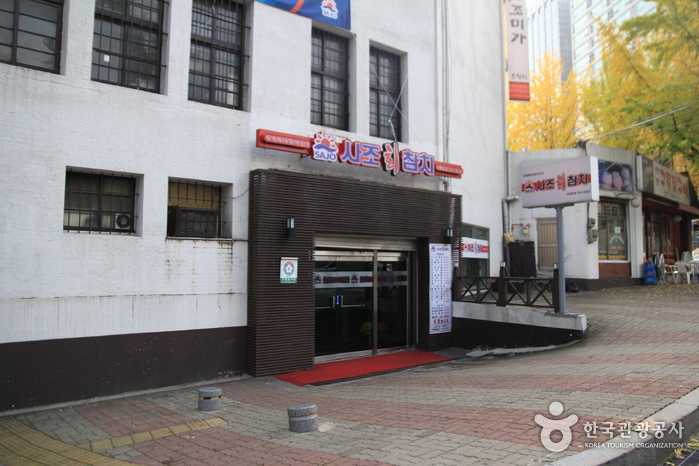
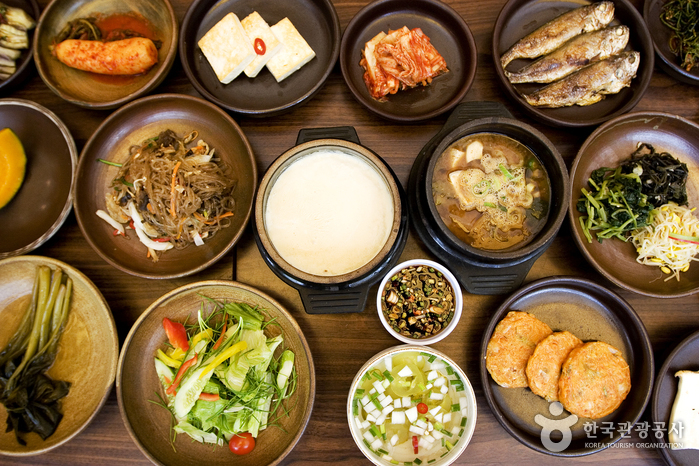
 Español
Español
 한국어
한국어 English
English 日本語
日本語 中文(简体)
中文(简体) Deutsch
Deutsch Français
Français Русский
Русский